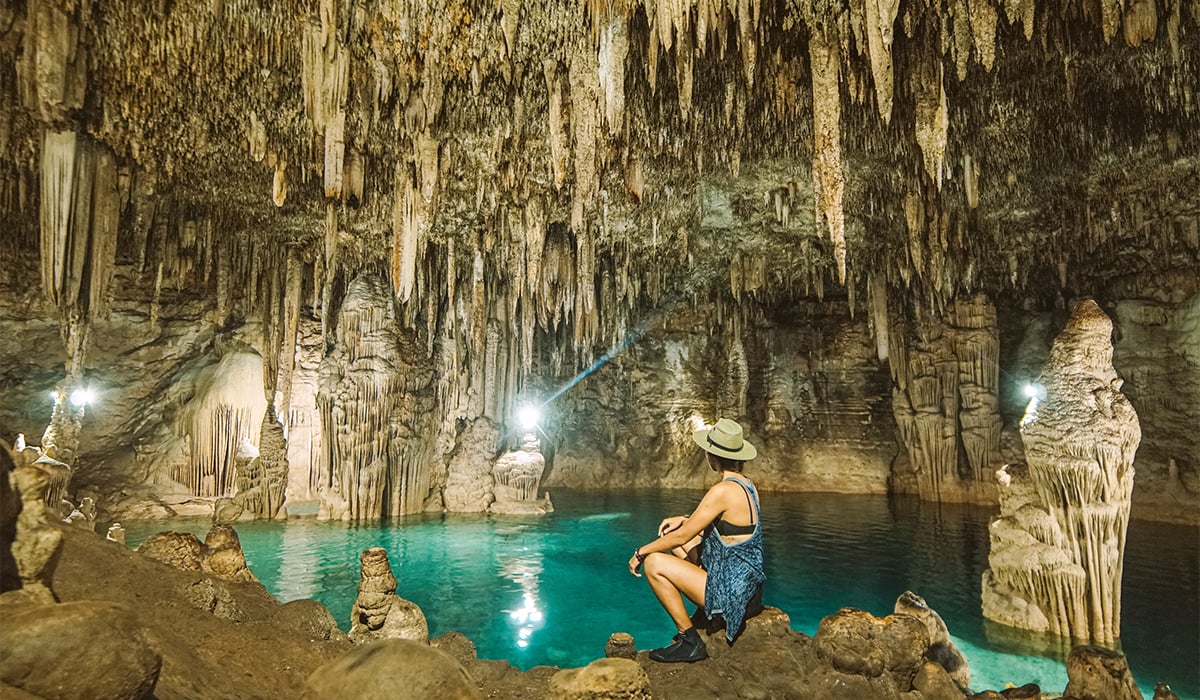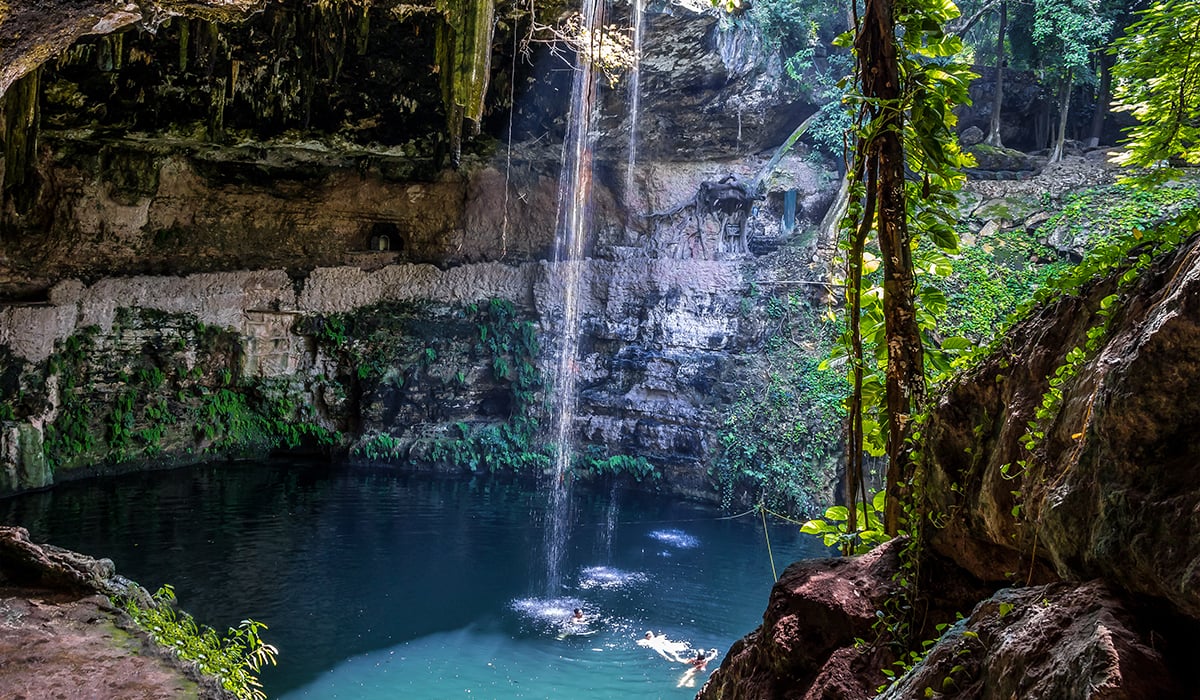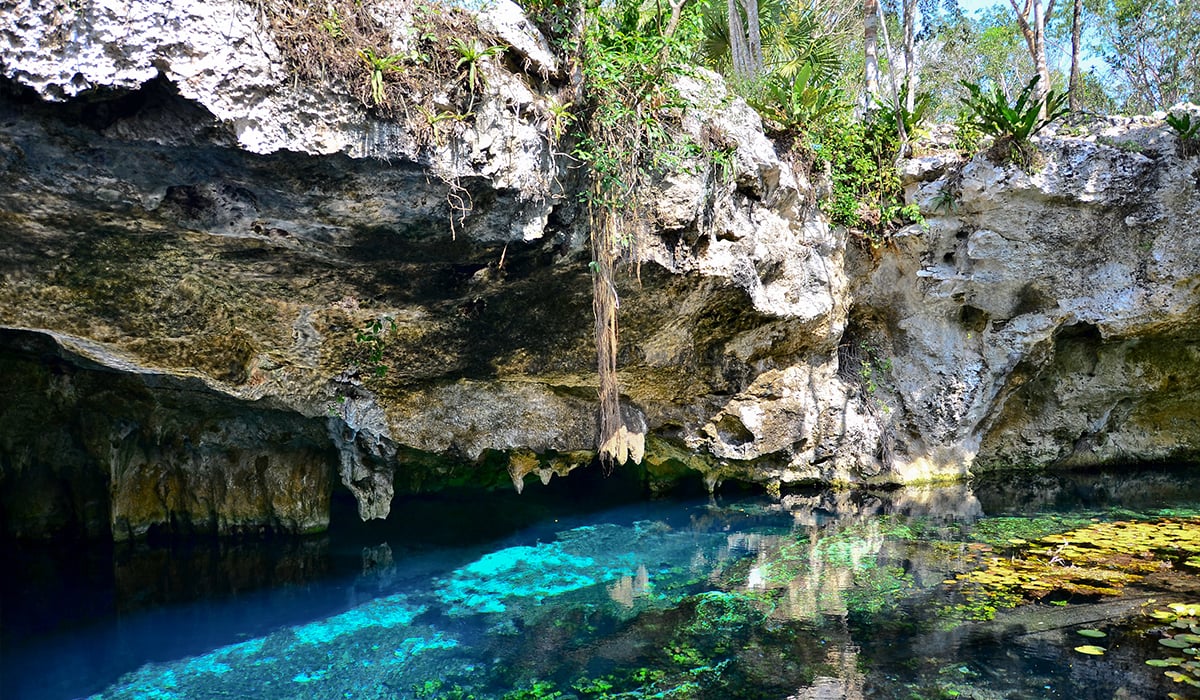Few are unmoved at the wonder and awe on looking at the sunrise or sunset in the Mexican Caribbean....
The origin of cenotes, and why people love to visit
Underneath the Yucatan Peninsula's flat terrain lies unique natural beauty. Cenotes are limestone formations that connect the Gulf of Mexico and the Caribbean Sea. In recent years, cenotes have captured the imagination of lots of different people, from tourists to anthropologists and scientists, who marvel at their different formations. Today we'd like you to find out more about their origin, their different types, and the specific cenotes that have become the go-to natural destination to visit when you're in the Mayan Riviera.
The origin of cenotes and their connection with the Maya

Since before the Conquest, the Maya people considered cenotes a source of water and life; their name back then was ts’ono’ot o d’zonot, which means "water deposit." Cenotes were also considered connections to the Maya underworld, "Xibalba”, which filled them with mysticism and spirituality.
Cenotes are actually complex aquatic systems generated by the dissolution of carbonates and other minerals from the soil; geologists call them dissolution lakes, although some cenotes are more similar to rivers, since they have connections to underground streams that promote water circulation.
Types of cenotes

While there isn't a rigorous classification of cenotes, one of the most accurate way to group them is by their formation mechanism through time. The cenotes in the Mayan Riviera vary in age, and are classified in:
- Cavern Cenotes. These are the youngest cenotes; the color of their water goes from emerald green to deep blue, which can be seen through cracks on the vault that covers them. Most of these cenotes are hard to access, as they're mostly covered and located deep within caves.
- Semi-open Cenotes. These are middle-aged cenotes, with a section that is already out in the open. Some of these may be connected to other nearby cenotes.
- Open Cenotes. These are the oldes cenotes, whose vaults have already collapsed. As such, they're completely in the open and easy to enjoy; they're the home and life source of several species of animals.
- Ancient Cenotes. They're similar to lagoons, as well as an oasis in the Mayan jungle.
Visit the cenotes of the Mayan Riviera

On your next visit to the Riviera Maya, you can't miss out on a visit to some of the most beautiful and popular cenotes among tourists:
- El Gran Cenote. Connected to one of the largest cave systems in the world.
- The Car Wash Cenote A beautiful, semi-open, and uncrowded cenote, its diving area is five meters deep, with stalactites, aquatic plants, fish, and freshwater turtles.
- Zazil-Ha Cenote. Perfect for families, as it also offers a pool, rest areas, changing rooms, restaurant, cabins, restrooms and showers, parking, snorkeling equipment rental, and much more.
If you're already thinking you need to plan a trip to discover these wonders of nature, we recommend booking accommodation near them. Discover the apartments we have available for rent in Tulum, and make the most of your Mayan Riviera visit.
You may be interested in: Who are "happiness seekers," and how are they changing the rules for vacation rentals?



